We spent some time in Kathmandu before and after our Everest Base Camp Trek. We stayed in the Thamel neighborhood, which was convenient as everything we needed was within easy walking distance. The narrow alleys in Thamel are packed with tour companies, restaurants, hotels, day spas, and every kind of shop you can imagine. Our trekking company arranged for a local guide to take us out for a city tour of Kathmandu and we enjoyed visiting some of the city’s cultural heritage sites.

Our first stop was the Swayambhunath Temple, also known as the Monkey Temple I suppose because of the many monkeys that hang around. Our guide Rita walked us through the temple, including the centerpiece Buddhist stupa with the famous eyes at the top surrounded by prayer flags.
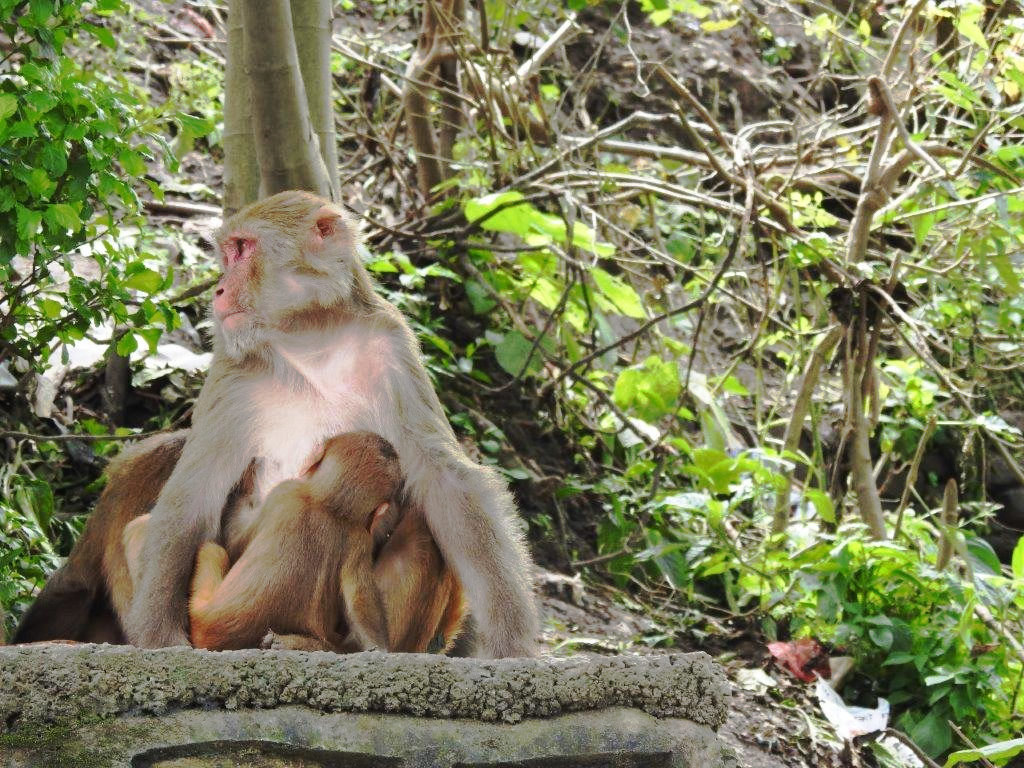
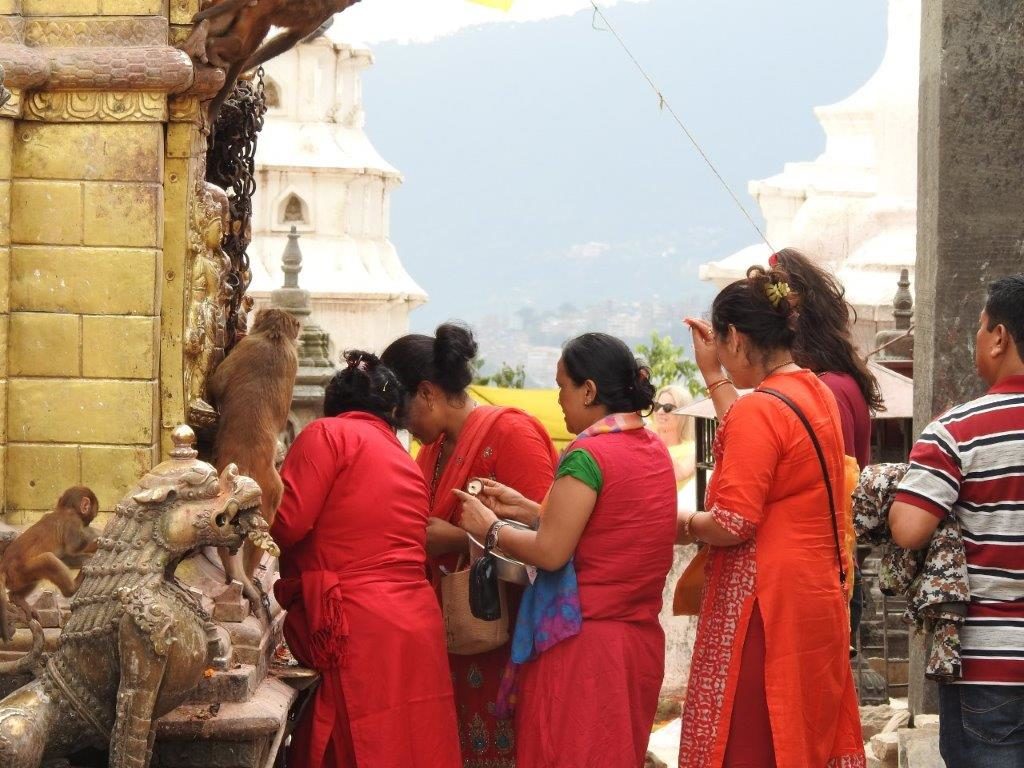
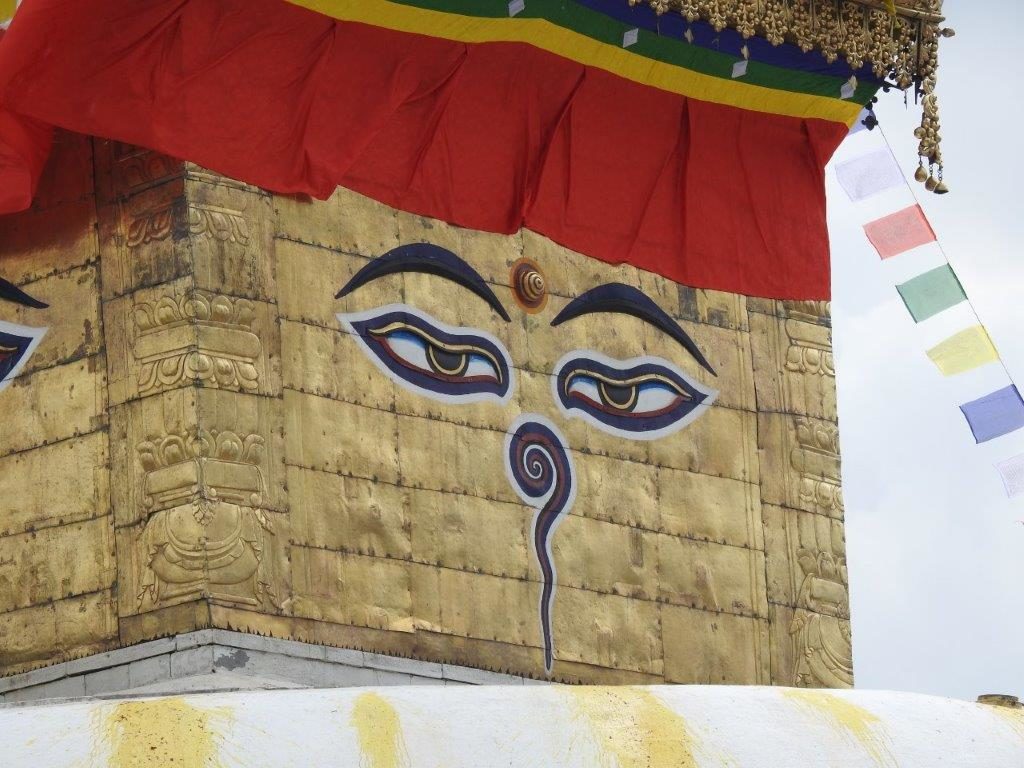
Around the stupa were some smaller Hindu temples and Rita showed us how to receive a Hindu blessing, including the signature red mark on the forehead. We were actually in Nepal during Dashain, which is a major religious festival celebrating the victory of good over evil. The symbol of power, Goddess Durga is worshiped during the festival.
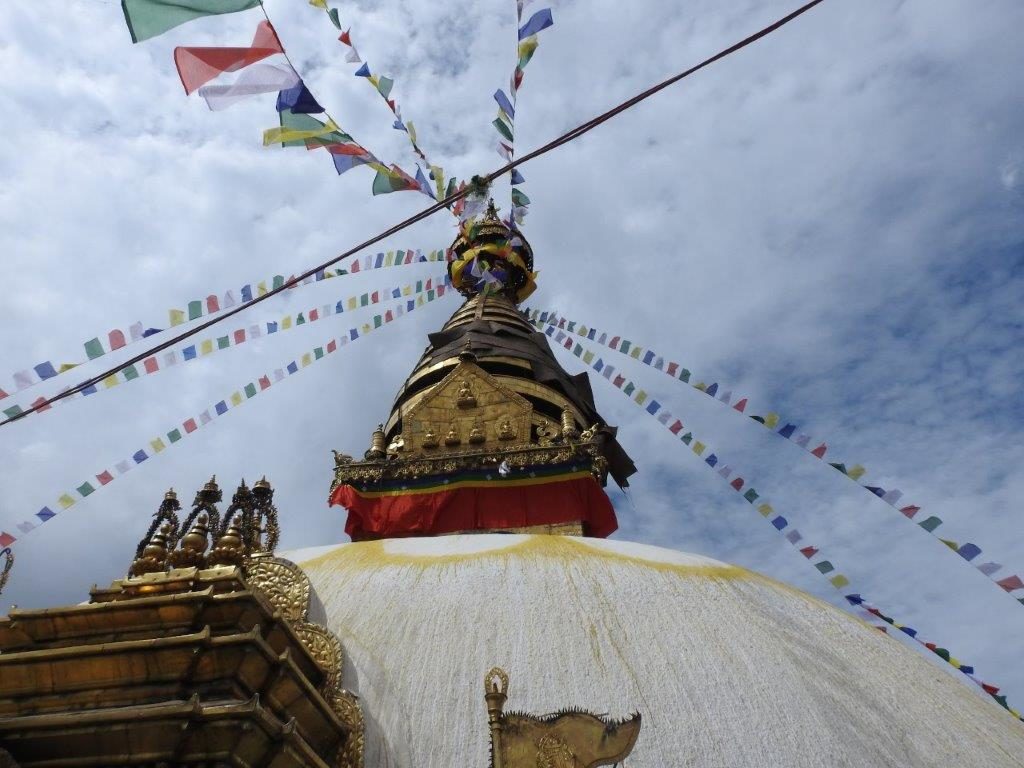
Next we went to Kathmandu’s Durbar Square and went to the Kumari House. The Kumari Devi is a young girl who has been selected around the age of 6 to be a living Hindu goddess and live inside the Kumari House until about the age of 12, when she goes back to her regular life and non-goddess status. Apparently the little girl must go through some intense screening to make sure she is fit for the living goddess position. While she is the Kumari Devi the little girl is cared for by a team of people and only leaves the Kumari House for special occasions such as festivals. When she does come outside she wears elaborate makeup and clothes and is carried so her feet do not touch the ground.
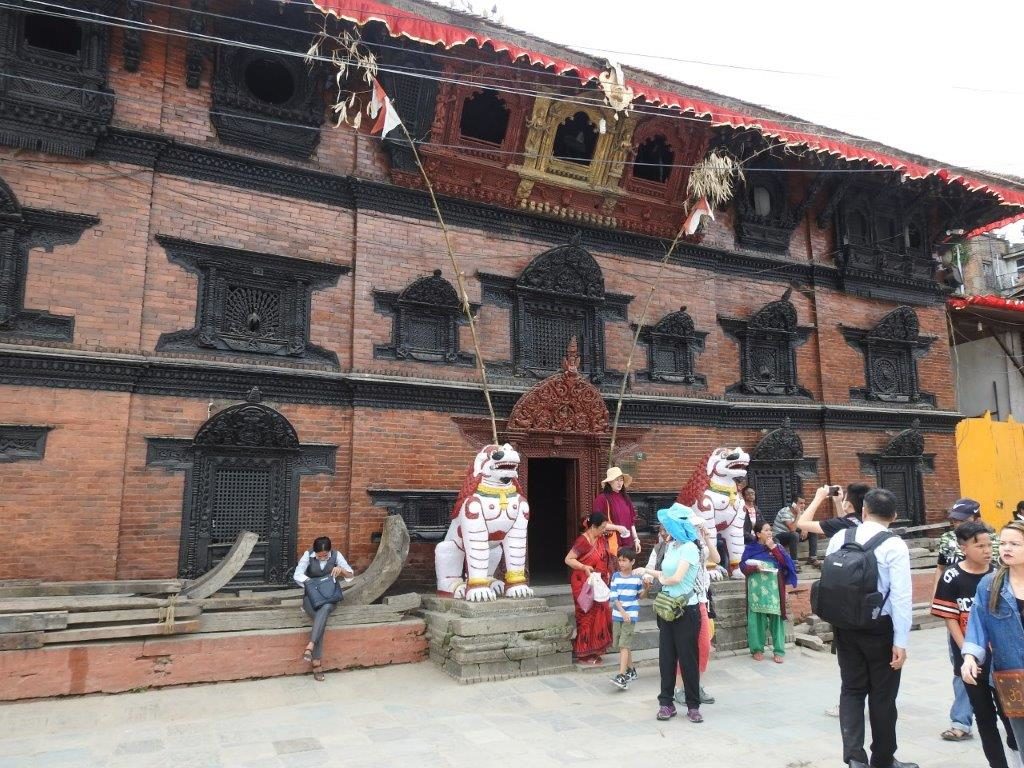
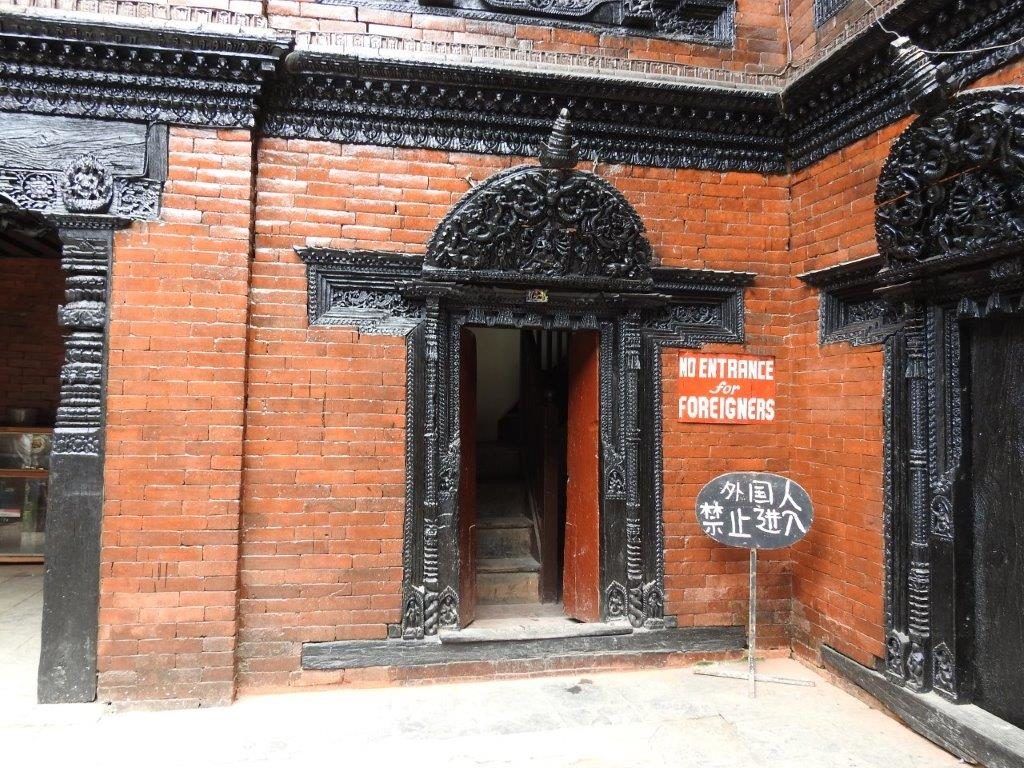
The Kumari Devi comes to the window of her house once per day When people below in the courtyard can see her. We were at the Kumari house when this took place so we were able to see and greet her from below. It is forbidden to photograph the Kumari Devi so I have no photos of her only the few of her house above.

Many of the buildings in Durbar Square, including the former royal palace, still show major damage from the 2015 earthquake that happened here. The palace is being repaired and restored and the work is anticipated to take 10 years. We walked around the outside, which had a good bit of scaffolding around it, but were not able to go inside due to the construction.
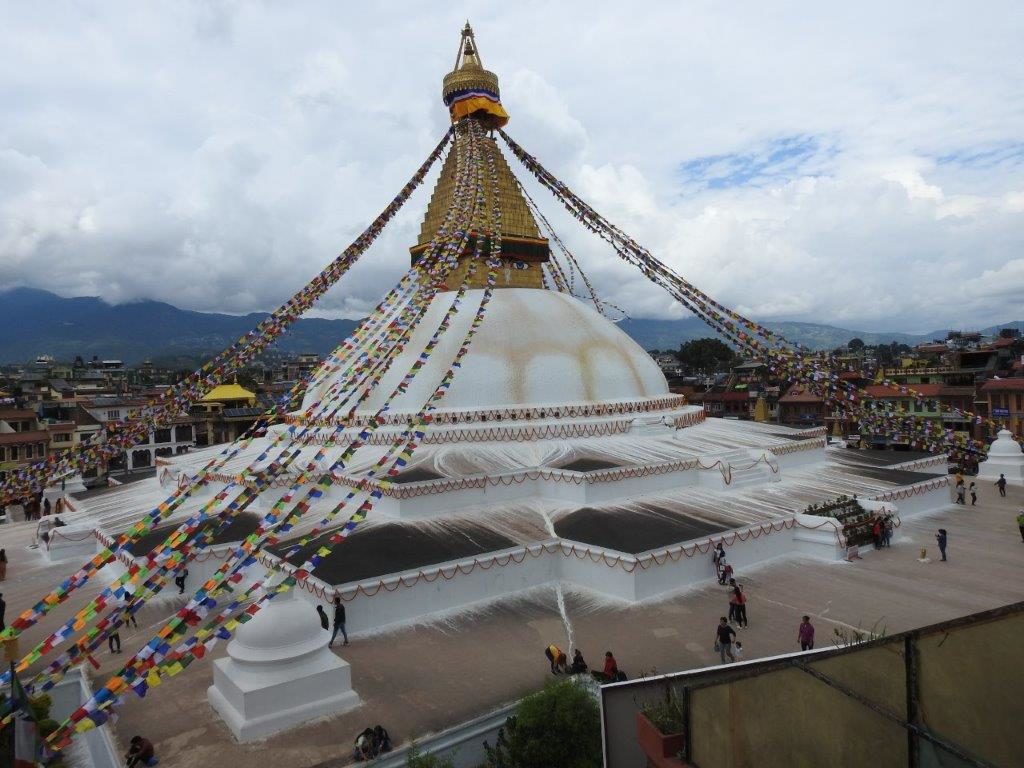
Next we went to the Boudhanath Stupa, which is one of the largest and most significant Buddhist monuments in the world. It serves as a giant mandala of peace and beauty with the eyes at the top in all directions representing the all knowing Buddha. We enjoyed lunch at a rooftop restaurant overlooking the stupa, which was lovely. We then walked around the stupa in clockwise direction as is the custom. Our guide showed us how to spin the prayer wheels and recite the chant “om mani padme hum.” We also visited a Thangka Painting School where students learn to reproduce the elaborate traditional wheel of life and mandala paintings. The artwork was so beautiful and we would have loved to purchase a piece of art to bring home if we only had a good way to transport it home.

We also visited the Pashupatinath Temple, which is a sacred Hindu temple complex on the banks of the Bagmati River. The main temple is off limits to foreigners but we were able to explore the expansive grounds as we liked. Along the river there are places where Hindu families say goodbye to their deceased relatives. The bodies are washed and blessed then cremated. The ashes are washed away directly into the river. All this is done out in the open so you can actually see bodies being prepared and then cremated on stone platforms along the river. It was a humbling and emotional thing to witness and a reminder that we all will pass on from this world at some point.
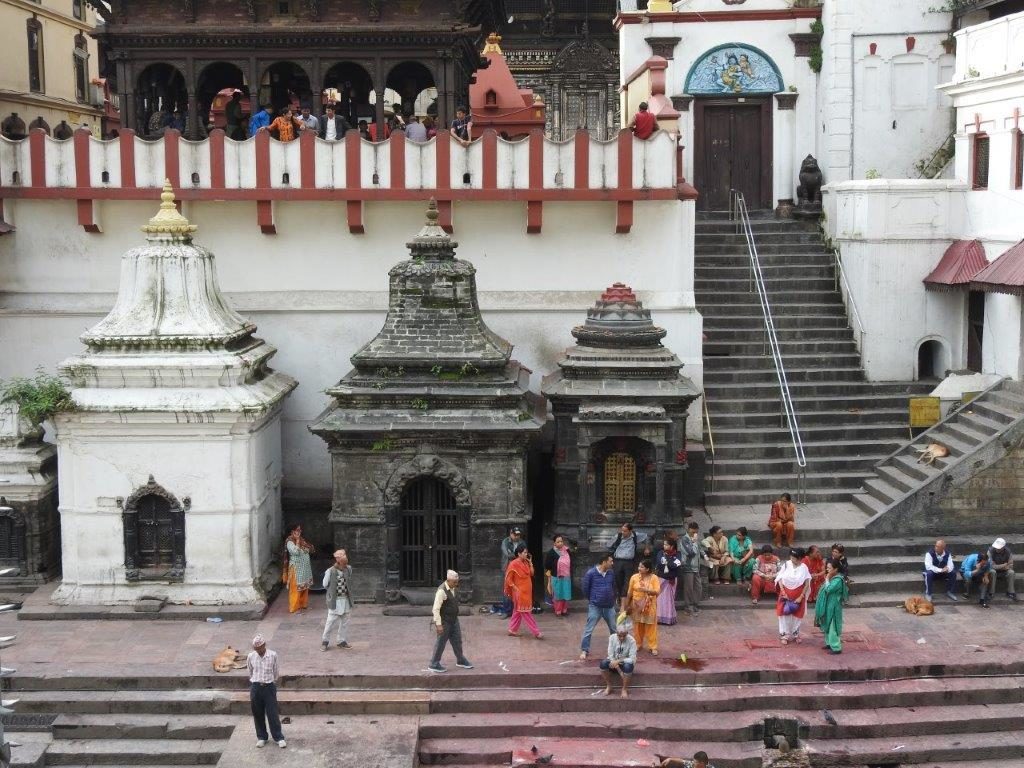
Kathmandu is the largest city in Nepal and home to over a million people. At least twice that many live in the greater Kathmandu Valley. It seems like the kind of place where there is never a dull moment. The streets stay busy and alive most of the day and night. Despite the pollution and chaos, I found Kathmandu to have an appealing atmosphere. Perhaps that was because of welcoming and accepting nature of so many of the people we encountered during our time there.

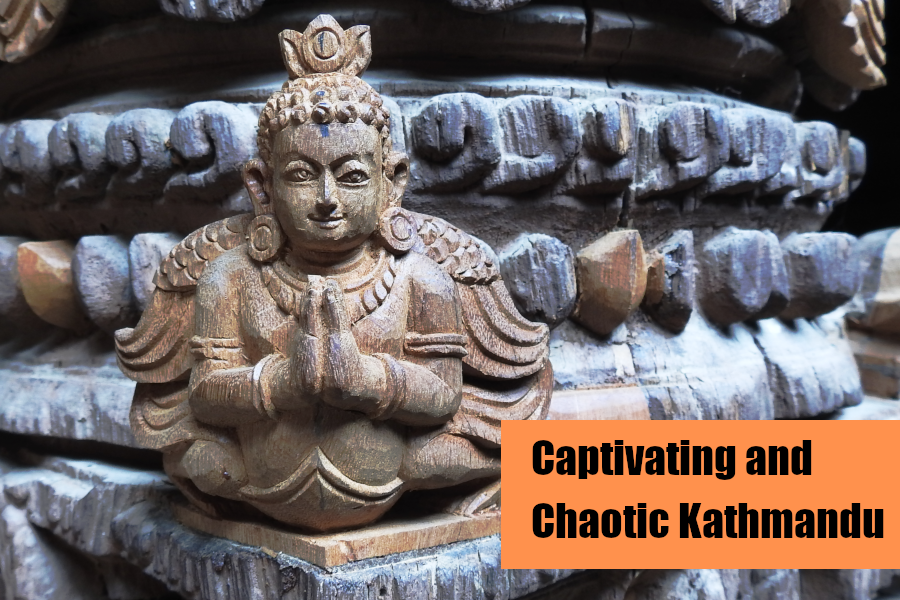

Lovely post and photos, as always! Great place to explore after your trek,